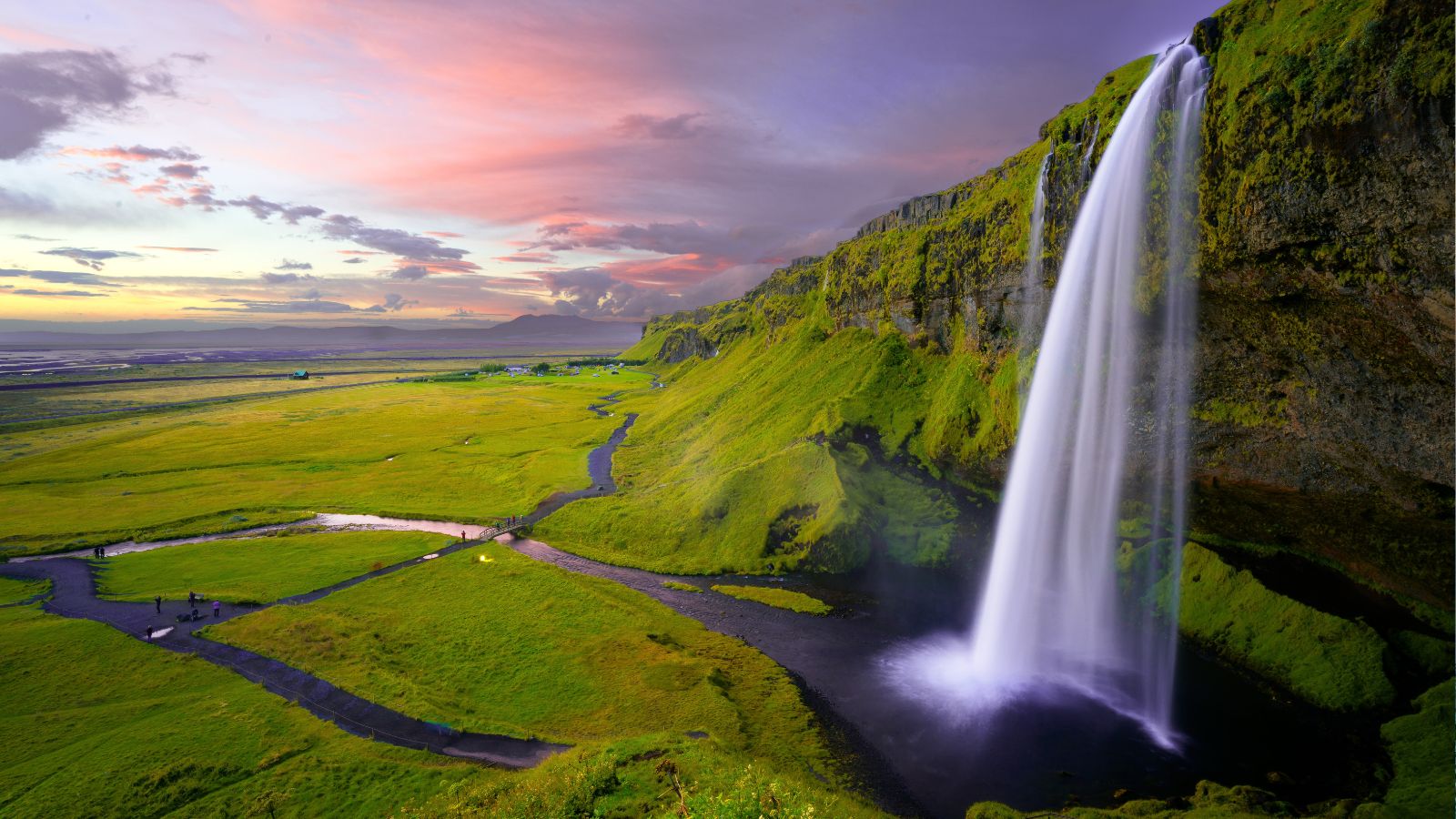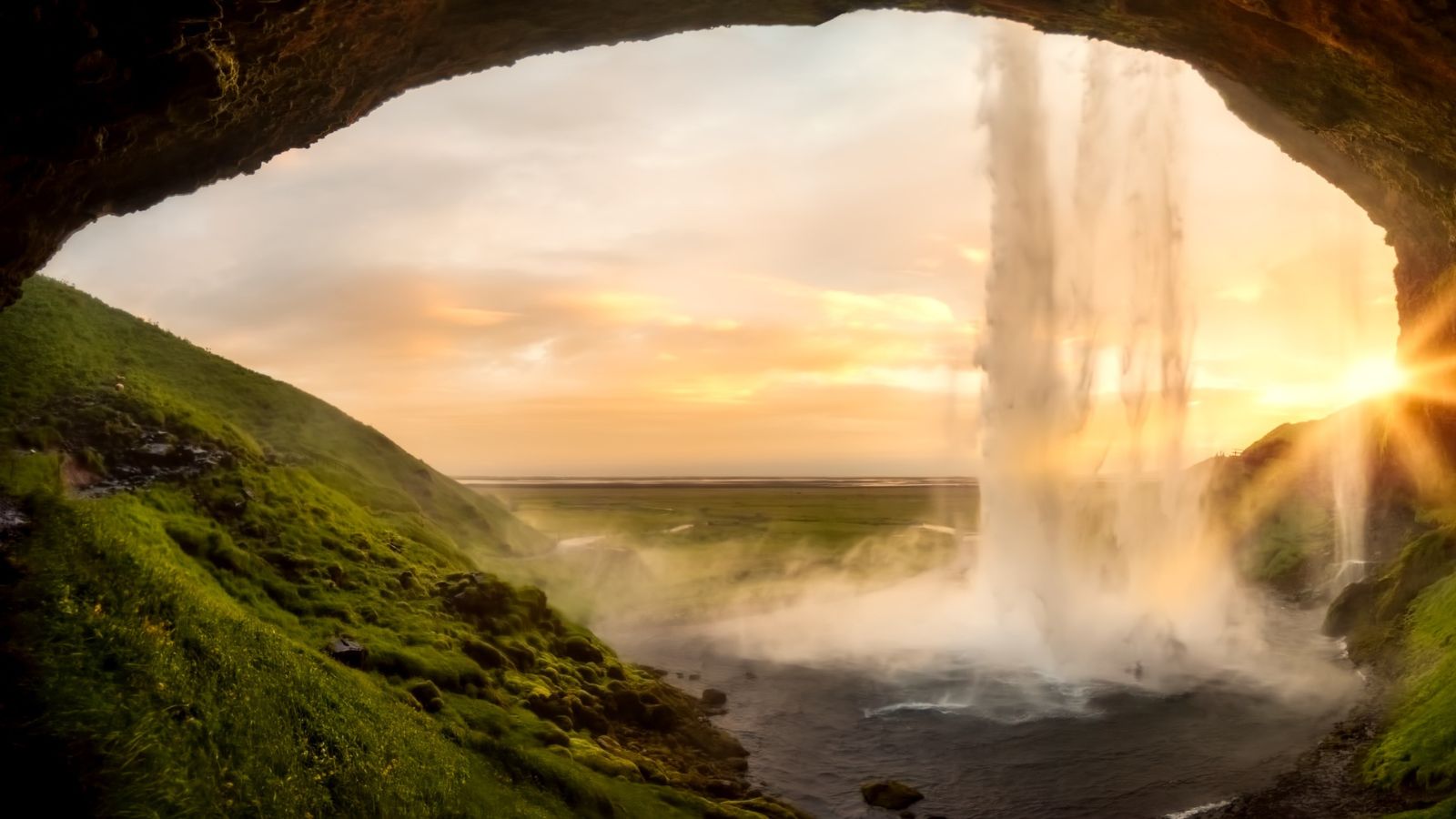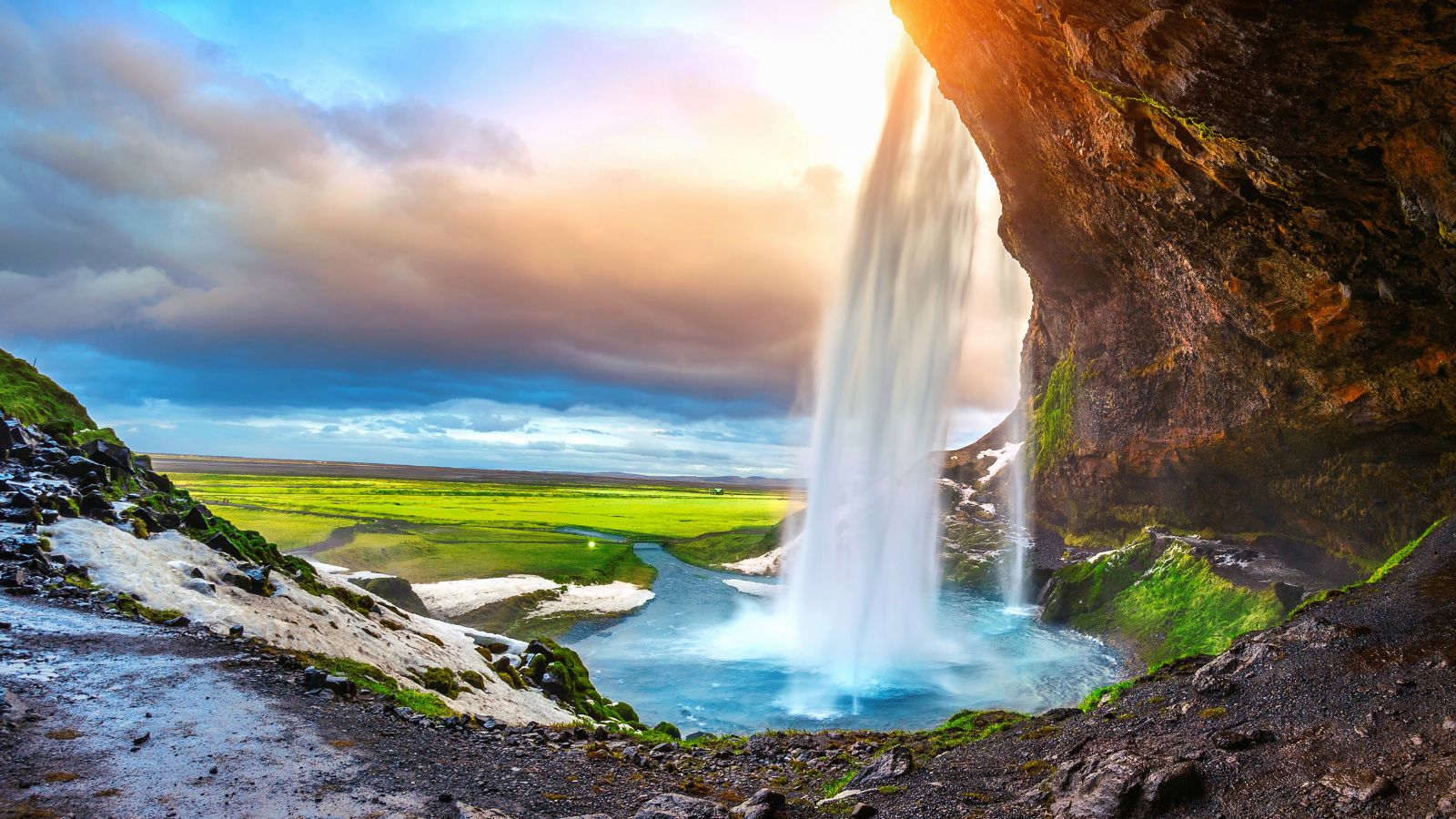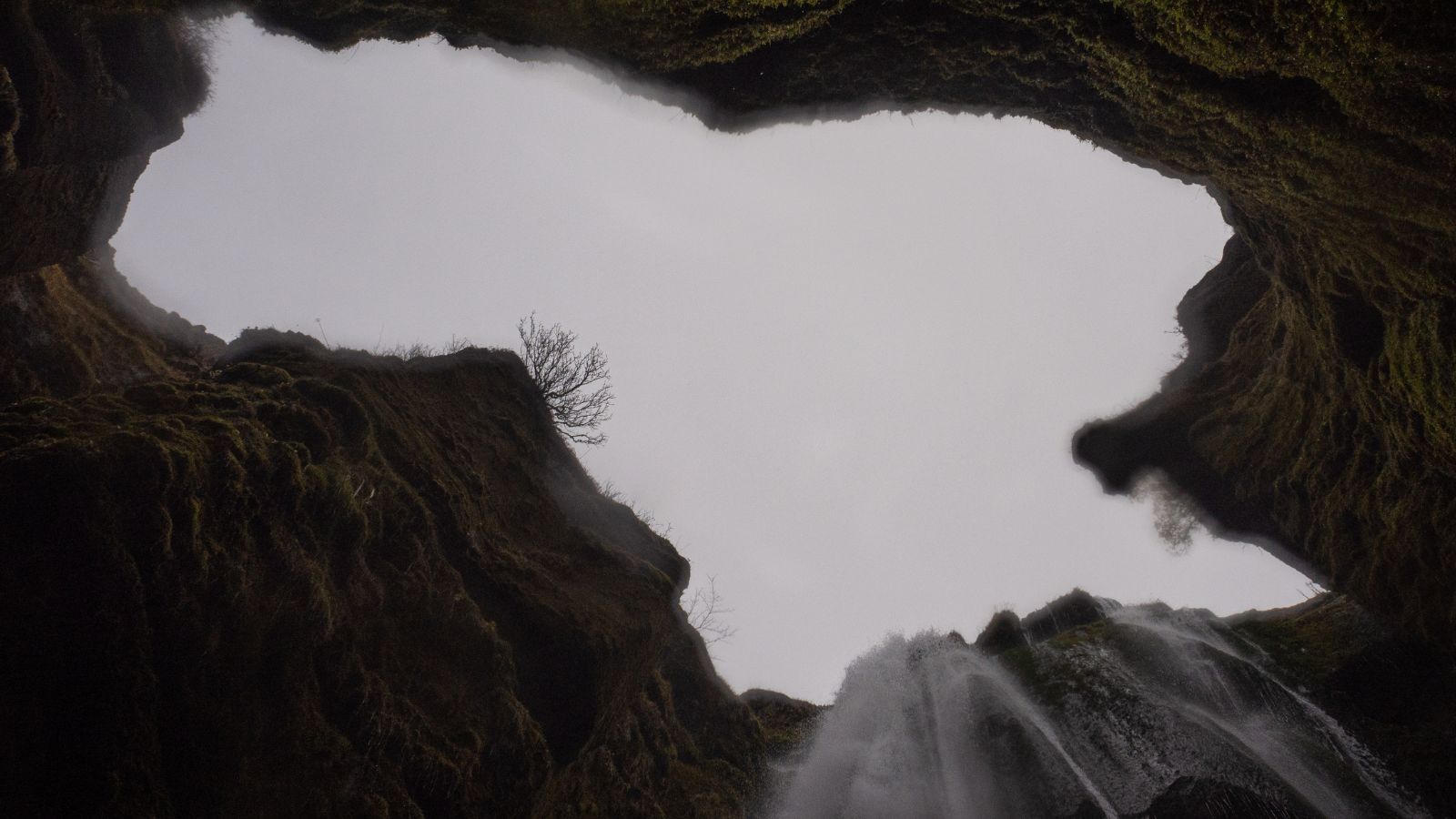
If you’re looking to learn more about the famous Icelandic waterfall that you can walk behind, you’ve come to the right place. Seljalandsfoss is one of Iceland’s most beloved wonders, and particularly popular with those who enjoy photography. This striking waterfall tumbles down a 200-foot cliff face, making for a dramatic experience, especially if you hike the path that allows you to stand behind the powerful, thundering falls.
If you’re planning a road trip to Iceland, you simply have to plan a stop at Seljalandsfoss waterfall, and our rental cars are the perfect way to get you there in comfort and safety. Here, we’ll tell you everything you need to know, covering how to get there, the best time of year to visit, and what else you can see in the area.
Where is Seljalandsfoss and How Do You Get There?
Seljalandsfoss is positioned in the South of Iceland, just off the Ring Road, also known as Route 1. It’s about 75 miles from Reykjavík and is easily accessible by car. To get to Seljalandsfoss from Reykjavík, leave the city heading Southeast on Route 1 for just under two hours.
Once you arrive at Seljalandsfoss, you’ll find that it is clearly signposted and very easy to see from the main road. There’s also a dedicated parking area, a very short walk away.

When is the Best Time to Visit Seljalandsfoss?
There are a few things to consider when planning your timing for when to visit the waterfall. Since it’s so accessible and popular, it can get very busy. For the most part, you can visit Seljalandsfoss all through the year, though there are pros and cons to each season.
It’s always best to visit first thing in the morning or later in the evening if you can, as this will present fewer crowds and a more peaceful experience. You might also get to catch sunrise or sunset, which makes for an unforgettable experience with the multi-colored sky filtering through the water of the falls.
Visiting Seljalandsfoss in the Summer (June - August)
Summer is the most popular time to visit Seljalandsfoss, especially near the Midnight Sun season. This allows you even more daylight hours in which to explore the falls and ensures that the paths will be accessible, including the one that leads you behind the falls. You can also enjoy lush summer landscapes and perfect photography opportunities!
Visiting Seljalandsfoss in the Winter (November - March)
Winter is a truly magical time to explore this waterfall, often flanked by ice and snow. Bear in mind that the path that leads behind the falls is often closed for safety reasons (think icy conditions), but the twinkling, frozen views are still breathtaking. You’re less likely to encounter large groups of other tourists, making for a more peaceful visit. Always be sure to check road conditions to be safe - driving in snow is possible in Iceland, but you don’t want to be caught unprepared.

Visiting Seljalandsfoss in Spring & Autumn (April–May, September–October)
The shoulder seasons are a great time to visit, and you’ll have the benefit of smaller crowds. The trails and paths are usually open in spring and autumn, but you may experience more rainy or windy conditions, so always pack appropriate clothing!
Other Attractions Near Seljalandsfoss
One of the highlights of visiting Seljalandsfoss is the fact that there is so much else to see nearby! And if you’re renting a car in Iceland, you have the freedom to explore as many attractions as you like, on your schedule. These are some of the best things you should check out while in the area:
Gljúfrabúi Waterfall (5-minute walk)
Just a short walk from Seljalandsfoss is another gorgeous waterfall. This hidden gem is somewhat concealed behind a cliff, but when you step through a narrow opening in the gorge, you’ll find this secret waterfall. Tip: Bring waterproofs!

Eyjafjallajökull Volcano & Visitor Center (15 min drive)
This small but highly interesting visitor center offers insight into Iceland’s volcanic activity and what it’s like to live near active volcanoes. It also tells you all about the 2010 eruption of Eyjafjallajökull, which grounded flights all over Europe.
Skógafoss Waterfall (30 min drive)
If you want to see even more waterfalls in the area, this one is not to be missed. Skógafoss is one of Iceland’s most popular and powerful waterfalls, or opt to explore the start of the nearby Fimmvörðuháls hiking trail.
Seljalandsfoss isn’t just one of Iceland’s most incredible waterfalls, it’s also an unforgettable experience. Make sure to plan plenty of time to explore nearby areas - there’s so much to do in South Iceland!